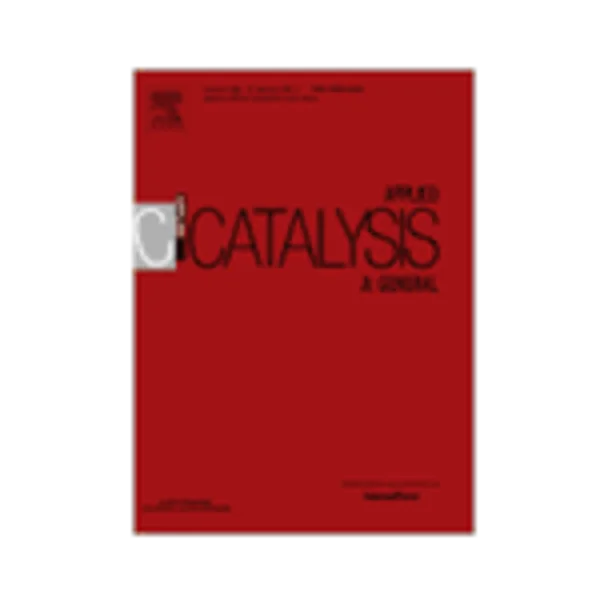-
parametric study of methane steam reforming to syngas in a catalytic microchannel reactor
جزئیات بیشتر مقاله- تاریخ ارائه: 1392/07/24
- تاریخ انتشار در تی پی بین: 1392/07/24
- تعداد بازدید: 935
- تعداد پرسش و پاسخ ها: 0
- شماره تماس دبیرخانه رویداد: -
the aim of this work is the parametric investigation of methane steam reforming (msr) to synthesis gas (syngas, co + h2) in a wall-coated catalytic microchannel reactor. methane conversion and co selectivity on coated rh, ru, pt and ni catalysts, all supported on al2o3, are compared in the parameter ranges of 12.86–77.14 ms residence time, 600–800 °c temperature and 0.5–3.0 m steam-to-carbon ratio at the reactor inlet. among the active metals, rh is the best one in terms of both methane conversion and productivity (rate of methane consumption per weight of catalyst). productivity decreases in the order of rh > ru > pt ≈ ni. for all catalysts, conversion increases with residence time, temperature and steam-to-carbon ratio. co selectivity is highest in all cases on rh, and increases with increasing temperature and decreasing steam-to-carbon ratio. however, in the range of residence times considered, a maximum co selectivity for each catalyst is encountered where the water–gas shift equilibrium becomes significant, and converts more of the co produced by msr to co2. time-on-stream runs conducted on rh and ni show that the former has excellent chemical and mechanical stability for 72 h even at extreme conditions such as steam-to-carbon ratio of 0.5 and residence time of 12.86 ms. activity of ni starts to decrease after 20 h even though it is operated at a steam-to-carbon ratio of 3.0. comparative tests conducted between microchannel and packed-bed reactors show that the former outperforms the packed bed in terms of productivity and co selectivity.
مقالات جدیدترین رویدادها
-
استفاده از تحلیل اهمیت-عملکرد در ارائه الگوی مدیریت خلاقیت سازمانی و ارائه راهکار جهت بهبود
-
بررسی تاثیر ارزش وجوه نقد مازاد بر ساختار سرمایه شرکت های پذیرفته شده در بورس اوراق بهادار تهران
-
بررسی تأثیر سطح افشای ریسک بر قرارداد بدهی شرکت های پذیرفته شده در بورس اوراق بهادار تهران
-
بررسی تأثیر رتبه بندی اعتباری مبتنی بر مدل امتیاز بازار نوظهور بر نقد شوندگی سهام با تأکید بر خصوصی سازی شرکت ها
-
تأثیر آمیخته بازاریابی پوشاک ایرانی بر تصویر ذهنی مشتری پوشاک ایرانی (هاکوپیان)
-
بررسی اثر ارتعاشات قطار زیر زمینی شهر قم بر بنای تاریخی سر درب مدرسه غیاثیه
-
فلسفه تکنولوژی بر مبنای صدرالمتالهین و از منظر هایدگر
-
بررسی حساسیت کژدم های خطرناک استان هرمزگان نسبت به حشره کش های شیمیایی پیشنهادی who
-
مروری بر آزمایش های مربوط به ستون های لوله فولادی بیضوی پر شده با بتن خود متراکم
-
enhancement of wear resistance of ductile iron surface alloyed by stellite 6
مقالات جدیدترین ژورنال ها
-
مدیریت و بررسی افسردگی دانش آموزان دختر مقطع متوسطه دوم در دروان کرونا در شهرستان دزفول
-
مدیریت و بررسی خرد سیاسی در اندیشه ی فردوسی در ادب ایران
-
واکاوی و مدیریت توصیفی قلمدان(جاکلیدی)ضریح در موزه آستان قدس رضوی
-
بررسی تاثیر خلاقیت، دانش و انگیزه کارکنان بر پیشنهادات نوآورانه کارکنان ( مورد مطالعه: هتل های 3 و 4 ستاره استان کرمان)
-
بررسی تاثیر کیفیت سیستم های اطلاعاتی بر تصمیم گیری موفق در شرکتهای تولیدی استان اصفهان (مورد مطالعه: مدیران شرکتهای تولیدی استان اصفهان)
-
کاربرد شناساگرهای زیستی در ارزیابی محیط زیست
-
اسکن فانتوم، گامی مهم در کالیبراسیون اولتراسوند سه بعدی و مقایسه روش های مختلف آن
-
بررسی رابطه بین افشای مسئولیت اجتماعی شرکت و سهم بازار
-
رفتارهای انحرافی در سازمان: تبیین نقش ادراک حمایت سازمانی و بی عدالتی، ناکامی و شخصیت
-
اثربخشی تصویرسازی ذهنی بر میزان نشخوار فکری و امید به زندگی نوجوانان افسرده شهرستان بابل




سوال خود را در مورد این مقاله مطرح نمایید :